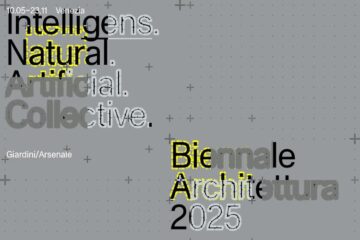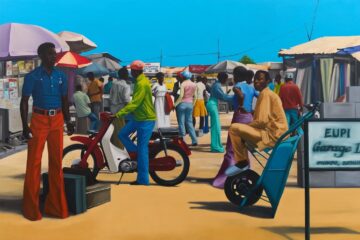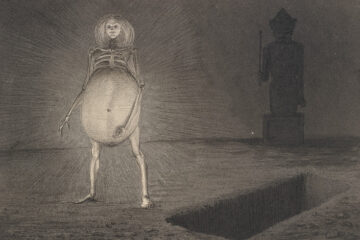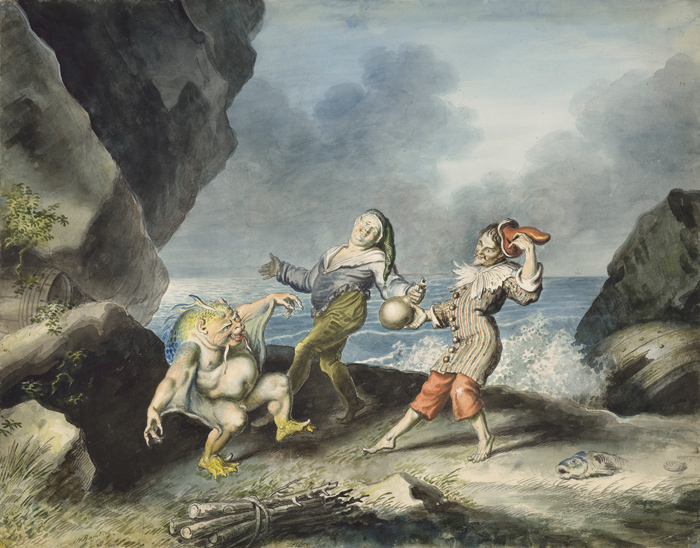
The elegant teal blue brochure that accompanies the visit to the British Pavilion of the 16th International Architecture Exhibition – La Biennale di Venezia, opens with two refined clues:
- a drawing by Johann Heinrich Ramberg, about “The Tempest“, the well-known play by William Shakespeare;
- and a quote by the not such well-known Spanish architect Alejandro de la Sota: “an architect should make as much nothing as possible».
This couple of evidencies gives us a first picture of what awaits us at the Pavilion, curated by Adam Caruso, Peter St John and Marcus Taylor, and entitled: ISLAND.
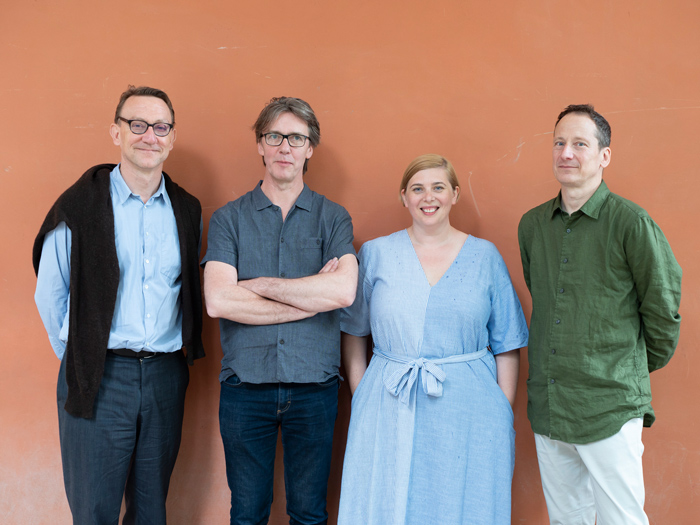
British Pavilion – ISLAND: the concept
From a conceptual point of view, the exhibition ISLAND, commissioned by the British Council, is an almost literal transposition of the main theme of the Biennale: FREESPACE, proposed by curators Shelley McNamara and Yvonne Farrell.
The “free space” is interpreted in the British Pavilion as an isolated space, a space detached from the rest of the world. An island, in fact. A space for reflection.
Not as a space that collects the elements of the exhibition, projects, models. But a space that aims to make you live the architecture, to experience it.
The British Pavilion is divided into two main elements: a “inner space“, inside the pavilion building, named “The Abandoned Pavilion“; and an “exterior space“, built above the pavilion building, “The Platform“.
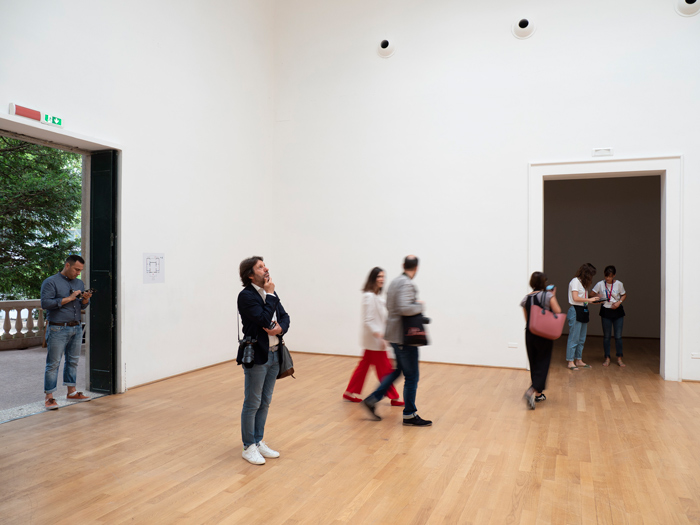
British Pavilion – ISLAND: The Abandoned Pavilion
The inner space is an empty space, abandoned, indeed. Inside the pavilion building there is nothing, and the visitor is called to remain amazed and dazed: there is not exhibition there.
Quoting Shakespeare:
Be not afeard; the isle is full of noises,
Sounds, and sweet airs, that give delight and hurt not.
[William Shakespeare, The Tempest, 3.2]
Here begins the path of “isolation” of the visitor, who must detach himself from the outside world, and enter a new world, the ISLAND, indeed. Just as it happened to Prospero, after the shipwreck, in Shakespeare’s play.
The empty space announces its potential, the possibility of being used. It will remain essentially empty for the months of exhibition duration. But the void will be filled, sometimes, by temporary events, performances, installations and debates. In the eyes of the visitor, these events will be something similar to “life on the ISLAND“.
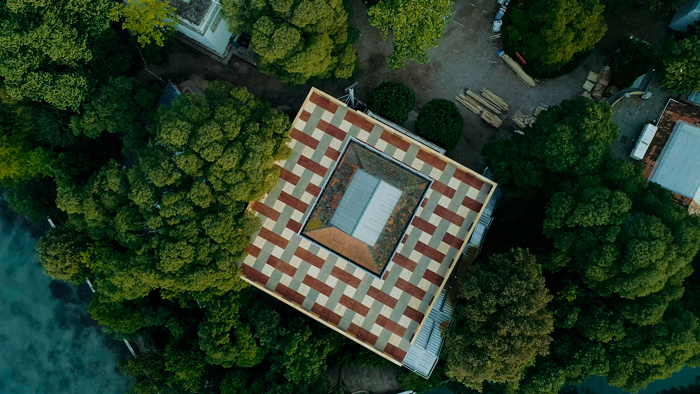
British Pavilion – ISLAND: The Platform
Outside the pavilion there is a scaffold staircase. Climbing it, the visitor arrives in a large open space, on the top of the pavilion building. This is a “free space“, like an elevated square. The wooden pattern of the floor of the platform, made with slabs of different colors, is a reminiscence of an Italian square.
It’s here that, beyond Shakespeare, de la Sota and the Architecture itself come into play: a square is an empty space between the buildings. It is a space in which “there is almost nothing“. It is an architecture that lives by exclusion from closed spaces, from buildings.
As the agora for the Greeks and the forum for the Romans, the square is the place of passage and rest. A place for the market and for the ideas exchange. A place to stop and think.
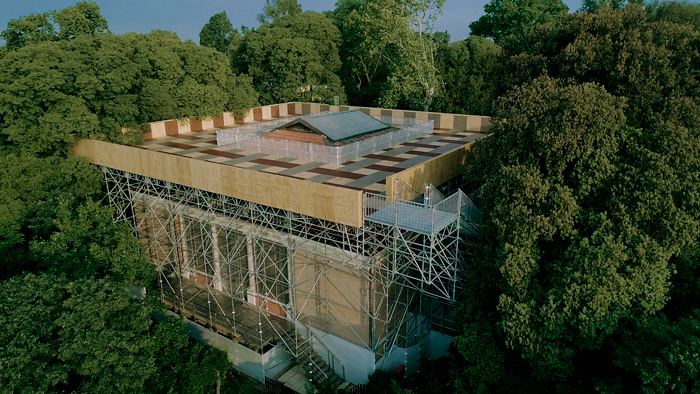
On the large ISLAND-square, visitors are asked to stop. There are chairs and umbrellas to shelter from the sun. Every day, at 4 o’clock, tea is served. [In the end, it’s the British Pavilion, we must not forget it].
The brilliant idea that has come to the curators of the pavilion, is to reverse the task entrusted to visitors: they must not “look” at the exhibition, they must “live” it.
And this idea, recognized as “courageous” by the jury of the Biennale, awarded the British Pavilion a deserved honorable mention.
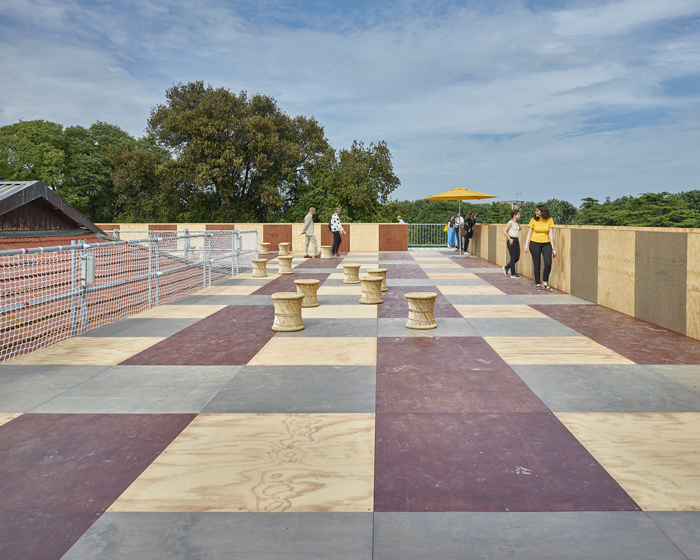
In addition to the curators of the pavilion, a wise vision has to be recognized, even to those who, having to choose between different projects, believed in this particular and stimulating idea: Amanda Levete, from AL_A, Pablo Bronstein, artist, Suzy Jones, from RIBA North, Gary Boyd, from Queen’s University Belfast, Debika Ray, from ICON magazine and Philip Long, from V&A Dundee.
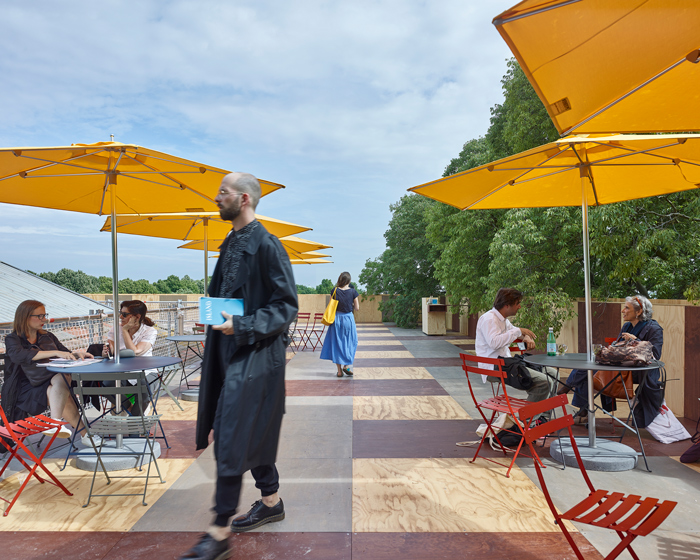
BRITISH PAVILION
16th International Architecture Exhibition
La Biennale di Venezia
26.05 – 25.11.2018
Biennale Gardens
Castello, 30122
30124 Venice
Italy
Text by Domenico Fallacara | the PhotoPhore
Discover: venicebiennale.britishcouncil.org
